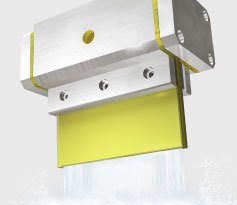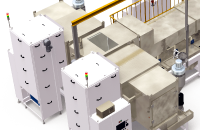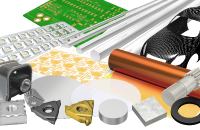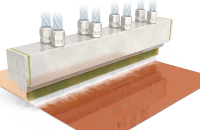Applications
Macoho's Wet Blast technology is now widely expanded to precision components such as materials for electronic components, printed circuit boards, printed wire boards, integrated circuits, and semiconductors. Many of these uses include deburring, deflashing, and improving adhesion (prevention of peeling). These are areas where dry blasting cannot be used.
Key Applications
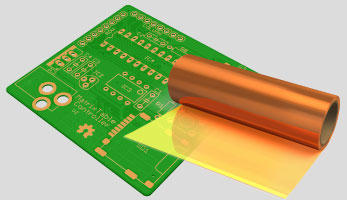
Electronic Parts
These are examples of our Wet Blasting equipment being used for electronic components such as PCBs and semiconductors, as well as for the pretreatment of adhesive-resistant plastics (PI, LCP, PET, etc.).
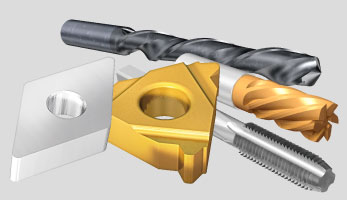
Carbide Tools
These are examples of wet blasting applications that include improving the coating strength of cutting tools, improving the life of cutting edges, and removing droplets after coating.
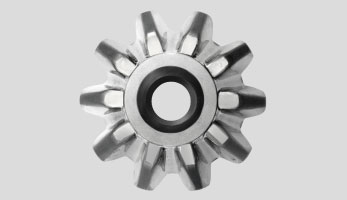
Removal of black scale and lubrication for cold forging
Our proprietary “WLS” technology, which uses wet blasting, significantly improves die life in cold forging with lubrication performance that exceeds that of bonderizing.
Application examples by industry
Automobile
Cleaning and pre-adhesion processing of anti-vibration parts
- Washing
- Roughening
Wet Blast Phosphating (WBP) is a surface treatment technique used for pretreatment for bonding of metal parts for anti-vibration rubber such as engine mounts, and brake parts.
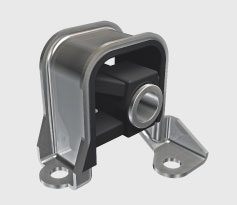
Steel
Removal of black scale and lubrication for cold forging
- Removal
- Roughening
- Scraping
Our proprietary “WLS” technology, which uses wet blasting, significantly improves die life in cold forging with lubrication performance that exceeds that of bonderizing.
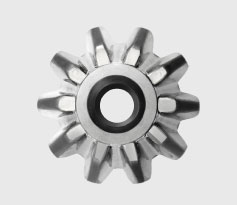
- Removal
- Scraping
This process scrapes off oxide scale (oxide film, black scale) from steel bars generated by heat treatment such as annealing. It is used as a pre-treatment for cold drawing and surface finishing.
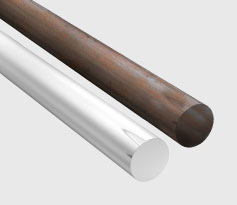
Carbide Tools
Coating pretreatment of cutting tools
- Washing
Bonding pretreatment by wet blasting that completely removes impurities such as grinding sludge and releasing agents that adhere to the surface of carbide tools, thus enhancing the adhesion of coatings.
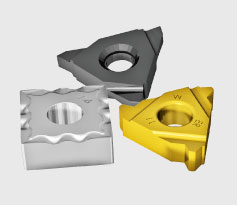
- Removal
This is a wet blasting application example, which removes burrs from the cutting edge of cutting tools during the manufacturing process, thus extending the tool life.
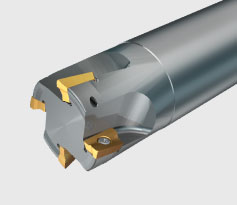
- Washing
- Removal
This is an example of wet blasting to remove droplets (granular protrusions) that occur on the coating applied to the surface of a tool without damaging the coating film.
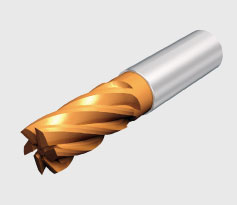
Electronic Parts
Improved adhesion for difficult-to-adhere resin materials
- Washing
- Roughening
Wet blasting pretreatment improves the plating adhesion strength of difficult-to-adhere resin materials (PI, LCP, PET, and others).
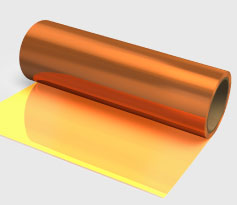
- Washing
- Roughening
This treatment is aimed at enhancing the adhesion of gold plating during the manufacture of printed wiring boards (PWB) and printed circuit boards (PCB), and reducing adhesion failure.
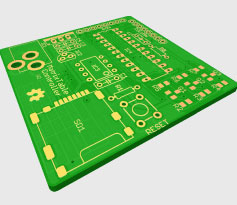
Removal of the glass non-conductive layer from LTCC substrates
- Washing
- Removal
This is an example of an application where wet blasting is used to remove the glass non-conductive layer formed during firing which causes plating defects, and to improve the plating adhesion.
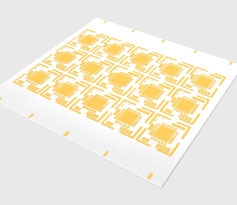
- Removal
A surface treatment technique for pretreatment for plating, such as removal and cleaning of thin burrs (flash-burrs) generated on power semiconductor packages.
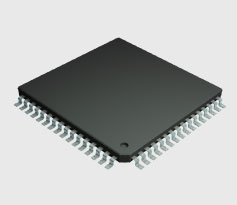
Improvement of underfill wettability
- Roughening
Fine surface roughening by wet blasting to enhance filling performance of the underfill (liquid curable resin for protecting the gold wires of IC chips).
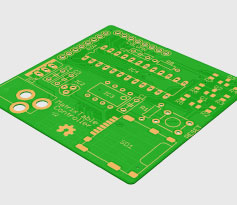
Scraping of the build-up substrate
- Scraping
Physical processing by wet blasting, which allows the filler-containing resin layer on the build-up substrate surface to be processed uniformly at high speed.
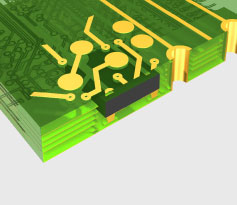
Removal of overmolding from embedded LED chips
- Scraping
This treatment scrapes the overmolding resin on the LED device that covers the chips as a result of manufacturing in order to expose the chips and electrodes.
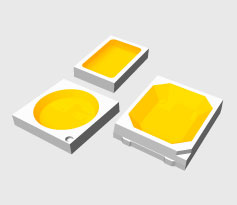
- Washing
- Removal
- Scraping
This treatment washes out burrs and dirt on the LED package of the SMD chip (surface mount type) to prevent reflectivity loss on the reflector surface.
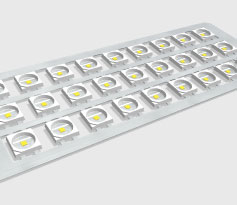
Glass/Lens
- Roughening
- Washing
- Scraping
A nano-level fine unevenness is formed on the glass surface, which controls reflectance and transmittance, improves wettability and adhesion, and reduces sliding resistance.
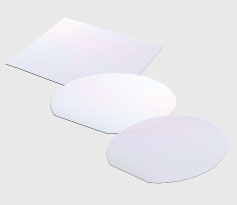
Plant Facilities/Maintenance
Maintenance of plant equipment
- Washing
This cleaning is a quick, easy, and physical way to remove oil, rust, and dirt from component parts that were removed from equipment or machines during regular maintenance.
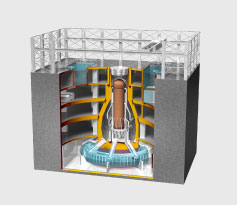
Cleaning of critical parts for maintenance
- Washing
It is a safe and secure process done in a comfortable environment. It can help you maintain your equipment longer by making older, rusty and dirty parts as good as new.
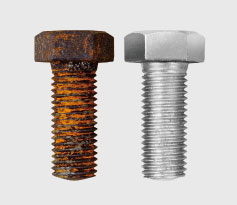
Aircraft
Peening of airplane engine parts
- Peening
We have combined wet blasting technology with Macoho’s patented “wide gun” to come up with a new peening method called “wet peening”.
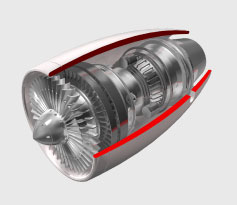
Other
Thin-film coating pretreatment
- Roughening
A strong coating film is formed on the surface by the anchor effect, which provides nano-level fine unevenness. There is no time dependence regardless of whether the material is organic or inorganic.
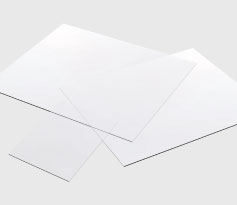
Beautification of exterior parts
- Peening
This is our unique, elaborate, new surface processing method, which is different from the conventional hairline finish, mirror finish, or satin finish.

Precision deburring of resins and metals
- Roughening
- Washing
- Scraping
Wet blasting, which can use fine abrasives of a few microns or smaller, is suitable for removing fine burrs, and is characterized by achieving a finish without damaging the target part.
